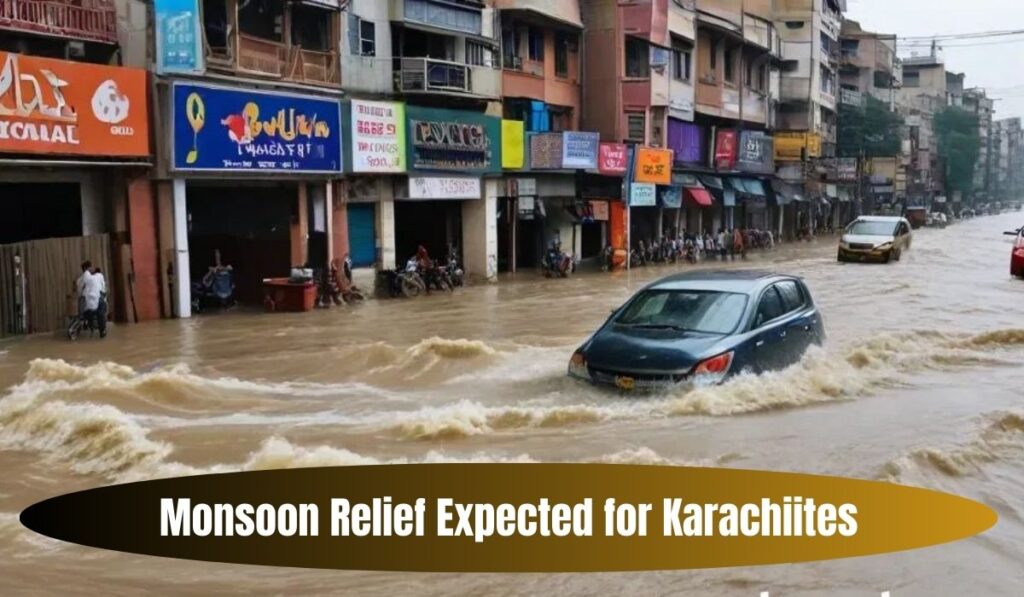As Karachi continues to endure a scorching heat wave, there is hope on the horizon for the residents of Pakistan’s bustling financial hub. The Pakistan Meteorological Department (PMD) has forecast that relief in the form of monsoon rains may soon arrive, bringing a much-needed break from the oppressive heat. This article will provide an overview of the current weather conditions, the health impact of the heat wave, and the expected changes with the onset of the monsoon.
Current Weather Conditions in Karachi
Heat Wave Continues
- Temperature Forecast: The PMD has predicted that temperatures in Karachi will range between 35°C and 37°C over the next 24 hours.
- Humidity Levels: Humidity levels are expected to be around 55%, adding to the discomfort caused by the high temperatures.
Brief Relief from Sea Breeze
- Sea Breeze Effect: Recently, a restoration of the sea breeze provided temporary relief from the intense heat. However, this respite was short-lived.
- Sporadic Rain: Occasional rain showers have been reported, but they have not been sufficient to significantly lower temperatures.
Health Impact of the Heat Wave
The prolonged heat wave has had tragic consequences for the residents of Karachi, leading to numerous heat-related illnesses and deaths.
Death Toll and Hospital Reports
- Confirmed Deaths: The Sindh Health Department has confirmed a total of 49 deaths due to heat-related illnesses.
- Hospital Reports: Abbasi Hospital reported 23 deaths, Civil Hospital reported 18, Jinnah Postgraduate Medical Centre (JPMC) reported 5, and Qatar Hospital reported 3.
Upcoming Monsoon Relief
Chief Meteorologist Sardar Sarfaraz has indicated that Karachi may experience some relief from the heat with the arrival of the monsoon season.
Expected Changes
- Onset of Monsoon: The monsoon rains are expected to start after July 8, bringing cooler temperatures and relief from the current heat wave.
- Vigorous Monsoon Activity: The PMD has predicted “vigorous monsoon activity” in the northern and central regions of Pakistan.
Impact on Rivers and Potential Hazards
- Heavy Rainfall: Heavy rainfall is expected to impact major rivers such as Sutlej, Ravi, and Chenab.
- Flooding Concerns: There are concerns about potential flooding and its effects on these areas.
Preparedness for Monsoon
In preparation for the anticipated monsoon rains, the National Disaster Management Authority (NDMA) has taken proactive steps to manage potential emergencies.
NDMA’s Actions
- Activation of NEOC: The National Emergencies Operation Center (NEOC) has been activated by the NDMA.
- Emergency Preparedness: Measures are being put in place to respond to any emergencies arising from the forecasted torrential rains.
Looking Forward
The expected arrival of the monsoon rains brings hope for relief from the ongoing heat wave in Karachi. However, residents are also advised to stay informed about potential flooding and other hazards associated with heavy rainfall. The PMD and NDMA are closely monitoring the situation and will provide updates as necessary.
Sources
- Pakistan Meteorological Department (PMD)
- Sindh Health Department
- Abbasi Hospital
- Civil Hospital
- Jinnah Postgraduate Medical Centre (JPMC)
- Qatar Hospital
- Chief Meteorologist Sardar Sarfaraz
- National Disaster Management Authority (NDMA)
Conclusion
As Karachi faces the dual challenges of extreme heat and the anticipated monsoon season, residents need to remain vigilant and prepared. By staying informed through updates from the PMD and NDMA, Karachiites can take necessary precautions to protect themselves and their families. With the onset of the monsoon, there is a promise of cooler weather, but also a need to be aware of potential hazards such as flooding.
Call to Action
- Stay Updated: Regularly check weather forecasts and updates from the PMD.
- Prepare for Rain: Ensure that your home and surroundings are ready for heavy rainfall.
- Take Precautions: Follow health advisories to stay safe during the heat wave and the monsoon.
- Stay Safe: Be prepared for potential emergencies and have an action plan in place.
By taking these steps, you can help ensure your safety and well-being during this challenging weather period.

